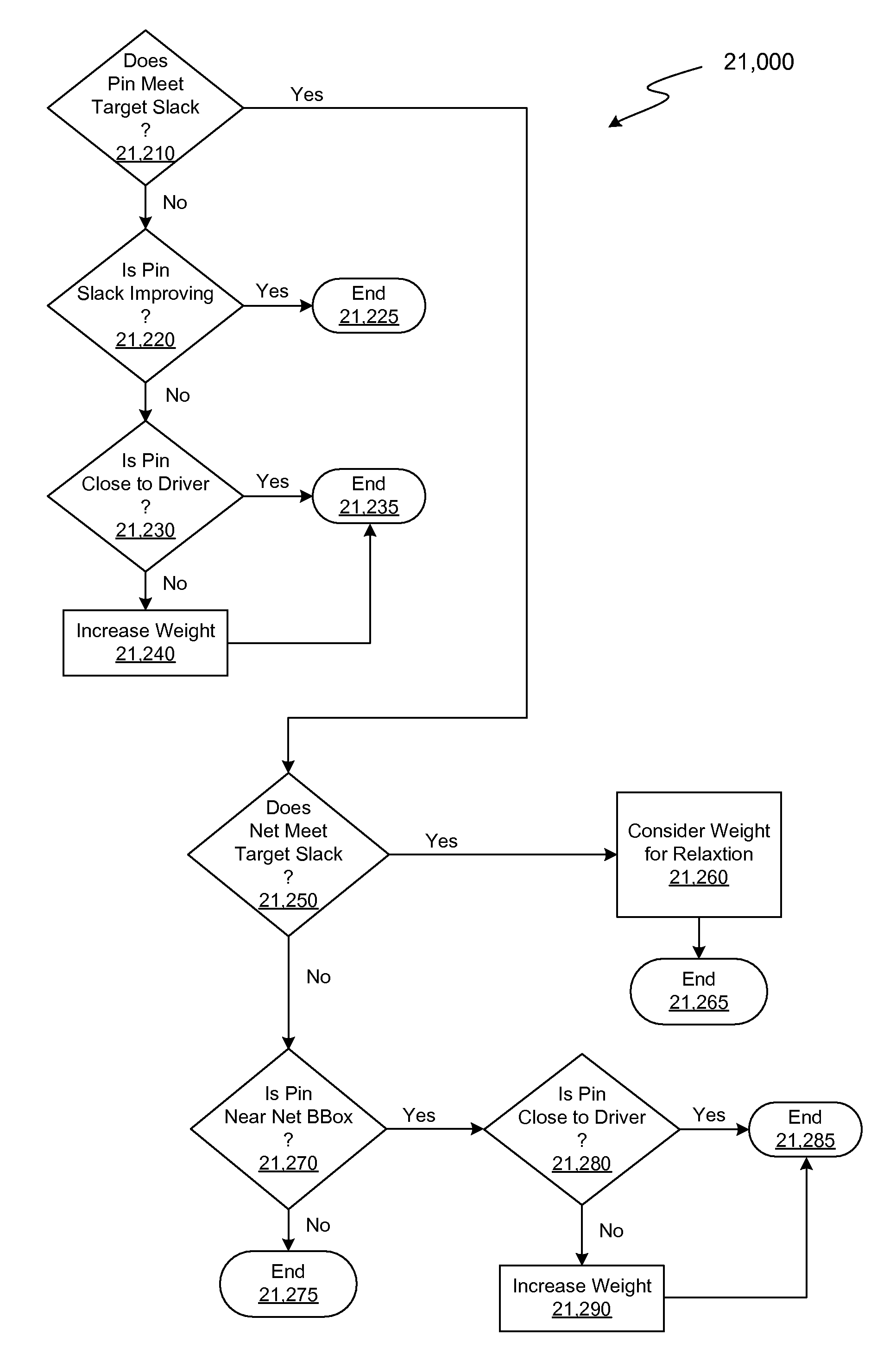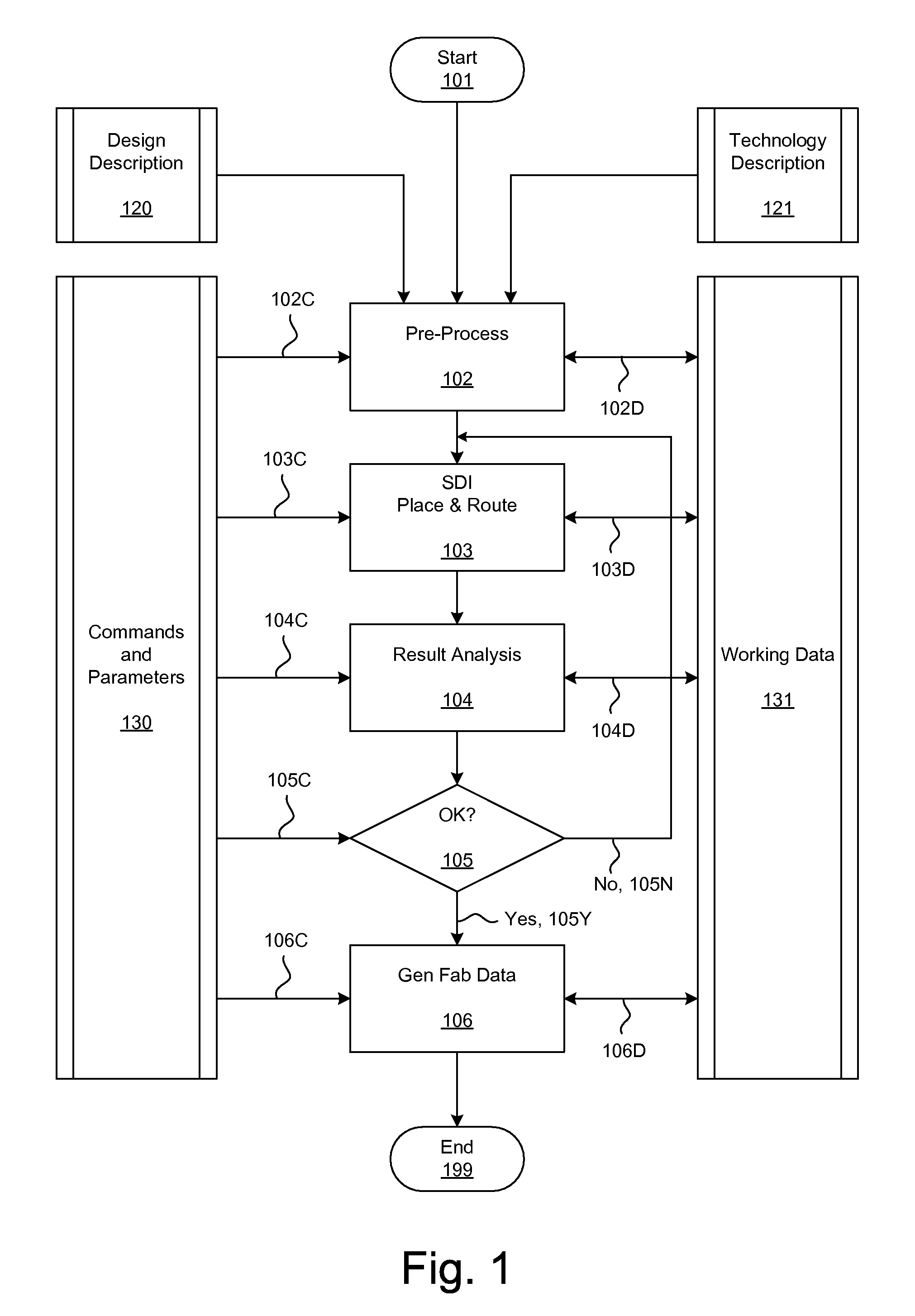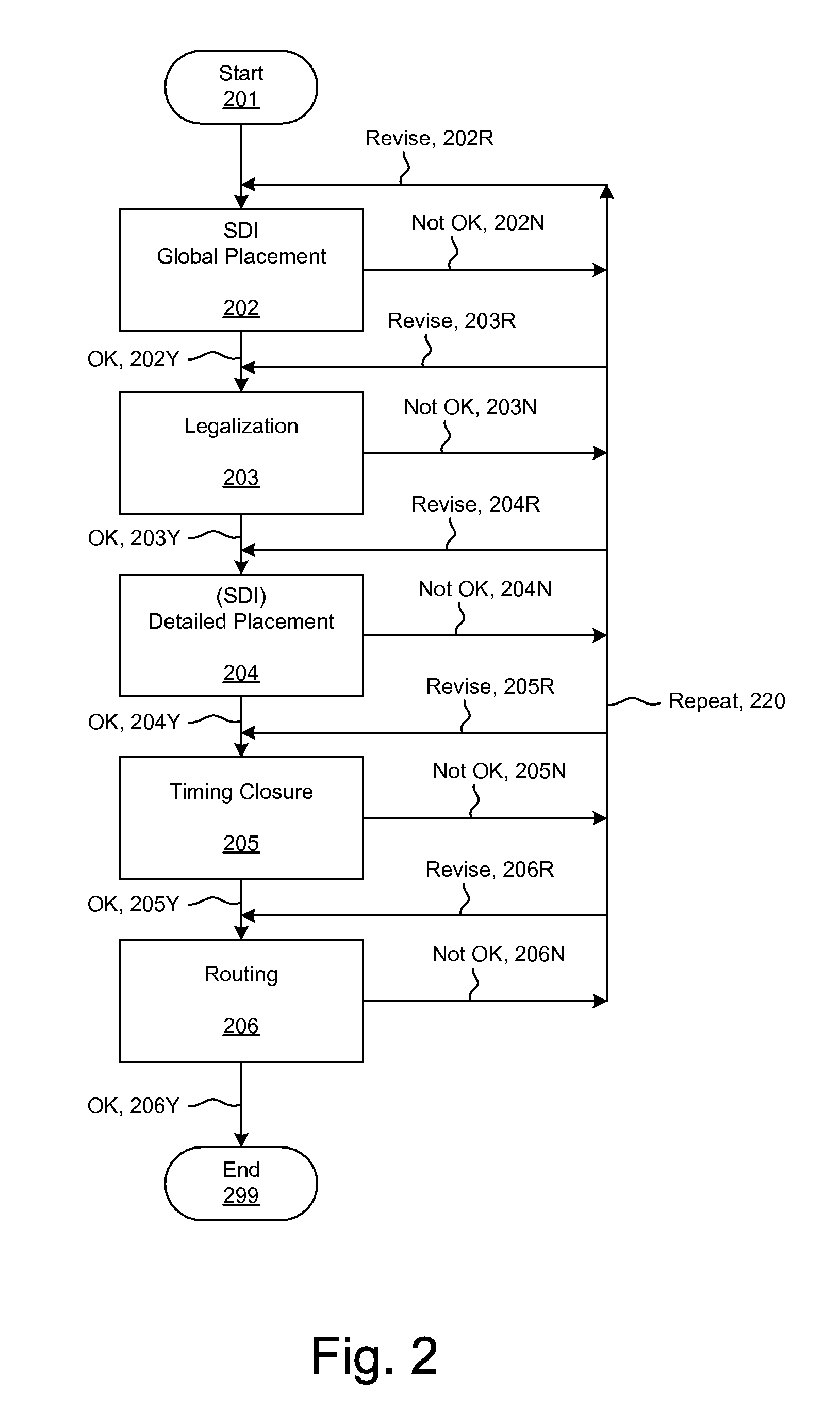Incremental Relative Slack Timing Force Model
a technology of relative slack and force model, applied in the field of integrated circuit design, can solve the problems of time-varying complexity in the behavior (character of motion) of the moveable nodes in the netlist, and the limitation of the departure of the morphable device to its implementation,
- Summary
- Abstract
- Description
- Claims
- Application Information
AI Technical Summary
Benefits of technology
Problems solved by technology
Method used
Image
Examples
first embodiment
[0026]FIG. 5A is a flow diagram illustrating selected details of resource reconciliation, as a first example of legalization.
second embodiment
[0027]FIG. 5B is a flow diagram illustrating selected details of resource reconciliation, as a second example of legalization.
[0028]FIG. 5C is a flow diagram illustrating selected details of an embodiment of partitioning.
[0029]FIG. 6 is a flow diagram illustrating selected details of an embodiment of detailed placement (also referred to as detail placement elsewhere herein).
[0030]FIG. 7A is a flow diagram illustrating selected aspects of an embodiment of delay path reduction and minimization, as an example of timing closure.
[0031]FIG. 7B illustrates a conceptual view of selected elements of an embodiment of timing-driven forces.
[0032]FIG. 7C illustrates a spatial organization of the driver and the coupled loads of FIG. 7B.
[0033]FIG. 7D illustrates an embodiment of Net Boundary Box (NBB) estimation of routing to cover the driver and the loads of FIG. 7C.
[0034]FIG. 7E illustrates an embodiment of a rectilinear Steiner Route Tree (SRT) estimation to cover the driver and loads of FIG. 7...
PUM
 Login to View More
Login to View More Abstract
Description
Claims
Application Information
 Login to View More
Login to View More - R&D
- Intellectual Property
- Life Sciences
- Materials
- Tech Scout
- Unparalleled Data Quality
- Higher Quality Content
- 60% Fewer Hallucinations
Browse by: Latest US Patents, China's latest patents, Technical Efficacy Thesaurus, Application Domain, Technology Topic, Popular Technical Reports.
© 2025 PatSnap. All rights reserved.Legal|Privacy policy|Modern Slavery Act Transparency Statement|Sitemap|About US| Contact US: help@patsnap.com



